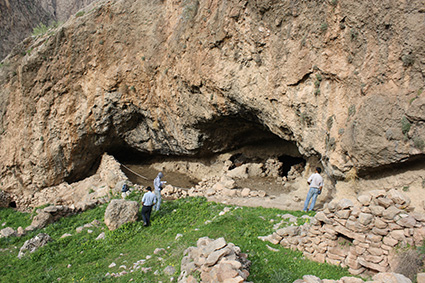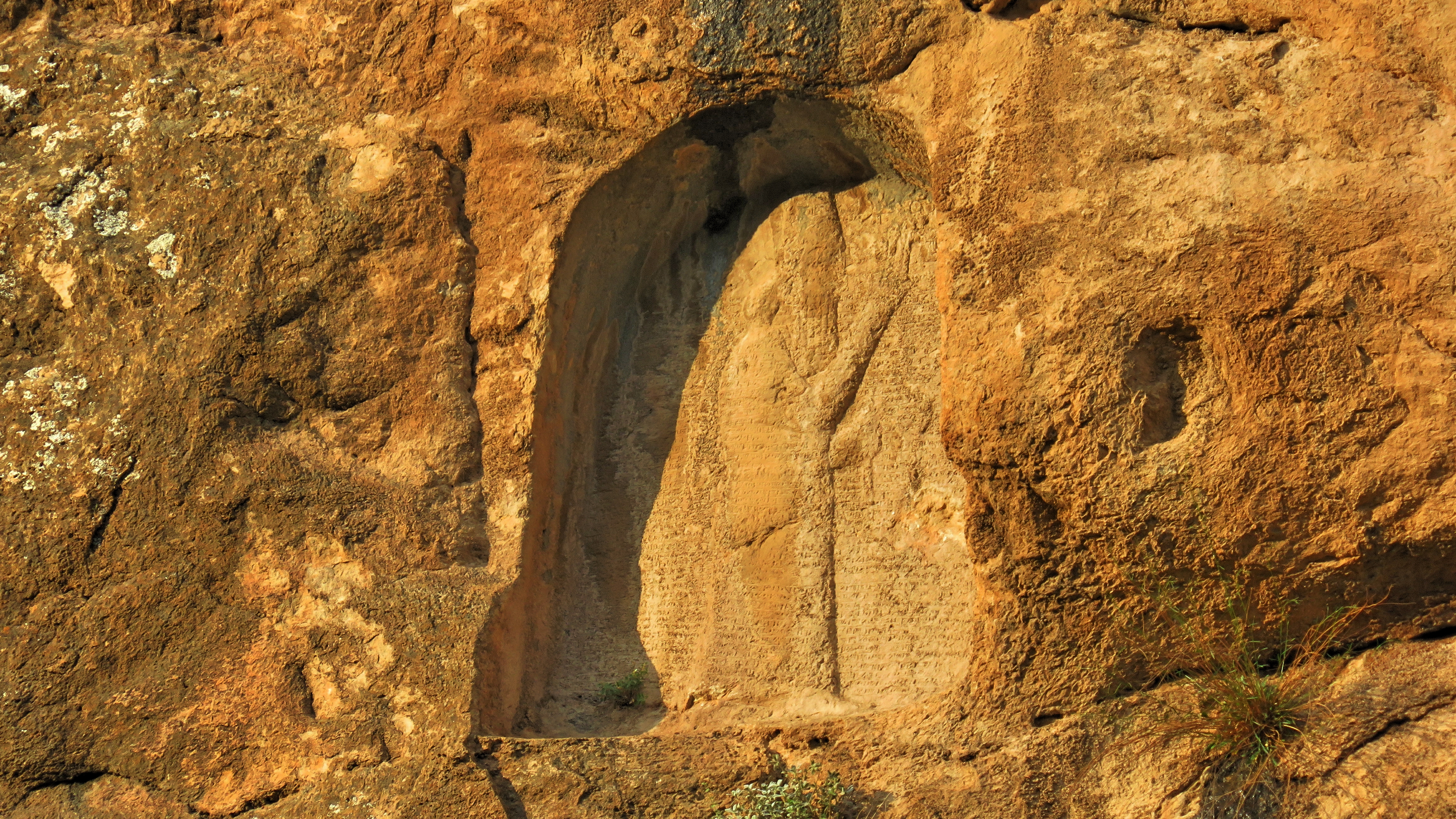|
Hawraman
Avroman or Hawraman, (, ) is a mountainous region located within the provinces of Kurdistan Province, Kurdistan and Kermanshah Province, Kermanshah in western Iran and in north-eastern Kurdistan Region in Iraq. The main part of the Hawraman region is located in Iran and encompasses two components of the Central-Eastern Valley (Zhawaro and Takht, in Kurdistan Province); and the Western Valley (Lahon, in Kermanshah Province). The mode of human habitation in these two valleys has been adapted over millennia to the rough mountainous environment. Tiered steep-slope planning and architecture, gardening on dry-stone terraces, livestock breeding, and seasonal vertical migration are among the distinctive features of the local culture and life of the Hawrami Kurdish people who dwell in lowlands and highlands during different seasons of each year. On July 27, 2021, part of the Hawraman region along with Uramanat Villages, Uramanat were inscribed on the World Heritage Site, UNESCO World He ... [...More Info...] [...Related Items...] OR: [Wikipedia] [Google] [Baidu] |
The Darian Dam Archaeological Salvage Program
Darian Dam was constructed on the Sirwan River between 2009 and 2015. The Dam is located in the Hawrāmān region of Kurdistan and Kermanshah. The Darian Dam Archeological Salvage Program (DDASP) was planned by the Iranian Center for Archaeological Research before flooding the reservoir. This archaeological program, under the general direction of Fereidoun Biglari, has conducted several seasons of archaeological surveys and excavations within the area of the reservoir that led to the discovery of many important Paleolithic and more later sites. The Main excavated sites were Darai Rockshelter (Middle Paleolithic), Kenacheh Cave (Upper Paleolithic), Ruwār tomb (Iron Age), Sar Cham (Chalcolithic and Iron Age), and Barda Mār (19th century). Except for Ruwar sites, all other excavated sites were flooded in 2015-2016. The results of these salvage excavations were presented at the First National Congress on Archaeology of Hawraman: Archaeological Salvage Excavations at the Darian Dam Re ... [...More Info...] [...Related Items...] OR: [Wikipedia] [Google] [Baidu] |
Uramanat Villages
Cultural Landscape of Hawraman or Cultural Landscape of Uramanat is the 26th tangible cultural heritage of Iran. This remote and mountainous landscape bears testimony to the traditional culture of the Hawrami people, an agropastoral Kurdish tribe that has inhabited the region since about 3000 BCE. The property, at the heart of the Zagros Mountains in the provinces of Kurdistan and Kermanshah along the western border of Iran. The Uramanat Villages are located in the mountainous Kermanshah and Kurdistan Provinces of Iran and Halabja Governorate of Iraqi Kurdistan. The villages are unique in terms of architecture, lifestyle, and agricultural methodology. Villages are integrated with nature by incorporating steep-slope agriculture. The 12 villages included in the property illustrate the Hawrami people’s evolving responses to the scarcity of productive land in their mountainous environment through the millennia. History The earliest archaeological evidence shows that the region was ... [...More Info...] [...Related Items...] OR: [Wikipedia] [Google] [Baidu] |
Hajij
Hajij-e Bozorg (, also Romanized as Hajīj-e Bozorg; also known as Ḩajīj) is a village in Sirvan Rural District, Nowsud District, Paveh County, Kermanshah Province, Iran. At the 2006 census, its population was 603, in 163 families. The village is in a district called "Hawraman" which lies through the mountains of Shaho. The language spoken by the native people is a variant of Kurdish called Hewrami. The tomb of Kose Hajij is located in the village. There is a large spring about 2 kilometers away from the village called Kani Bil or Bil spring which is the largest Karst spring in the region. The earliest archaeological records show that the Hajij vicinity was inhabited by humans since Middle Paleolithic Period. This evidence was discovered by archaeologists near the village and include stone tools that were probably made by Neanderthal Neanderthals ( ; ''Homo neanderthalensis'' or sometimes ''H. sapiens neanderthalensis'') are an extinction, extinct group of archaic h ... [...More Info...] [...Related Items...] OR: [Wikipedia] [Google] [Baidu] |
Parchments Of Avroman
The Parchments of Avroman (or Awraman) are three parchment documents, found in 1909 in a cave in the Hawraman region of Iranian Kurdistan. They were found in Tang-i Var, Kuh-e Salan Mountain, near the village of Shahr Hawraman. The documents were found in a sealed jar by a villager, and then sent to London in October 1913. The documents date from 88/87 BC to 33 AD, with two written in Greek and one in Parthian. They document the sale of a vineyard and other land, and include the names of Pātaspak, son of Tīrēn and Awīl, son of Baænīn. They were translated by philologist Philology () is the study of language in oral and written historical sources. It is the intersection of textual criticism, literary criticism, history, and linguistics with strong ties to etymology. Philology is also defined as the study of ... Ellis H. Minns and published in the ''Journal of Hellenic Studies''. References 1st-century manuscripts 1st-century BC manuscripts Archaeological discover ... [...More Info...] [...Related Items...] OR: [Wikipedia] [Google] [Baidu] |
The Inscription Of Sargon II At Tang-i Var
The Inscription of Sargon II at Tang-i Var is carved on the flanks of the Zinanah Mt. in the Tang-i Var pass in Hawraman, Iranian Kurdistan, about 50 km southwest of Sanandaj. It was discovered during an archaeological survey carried out by Sardaraz in 1968. It is located in a niche cut into the cliff face about 40 m above the valley floor and depicts an Assyrian ruler in a standard pose. A badly worn cuneiform inscription runs across the relief. The inscription records a campaign to the land of Karalla (lines 37 44) and also refers to Sargon's defeat of the Babylonian ruler Marduk-apla iddina 11 (Merodach -Baladan) which occurred in 710 -709. Since the Assyrian Chronicle mentions Karalla in its entry for 706, it is likely that there was a campaign to Karalla in that year, and that the relief and inscription of Sargon at Tang-i Var were made during or shortly after that campaign. This is the only known account of the campaign in Sargon's sixteenth year, a campaign that was not ... [...More Info...] [...Related Items...] OR: [Wikipedia] [Google] [Baidu] |
Yarsan
Yarsanism (), Ahl-e Haqq (; ), or Kaka'i, is an inherited, syncretic religion founded by Sultan Sahak in the late 14th century in western Iran. The total number of followers of Yarsanism is estimated to be over half a million to one million in Iran.''Encyclopedia of the Modern Middle East and North Africa'' (Detroit: Thomson Gale, 2004) p. 82 The numbers in Iraq are unknown. Followers are mostly Kurds from the Guran, Sanjâbi, Kalhor, Zangana and Jalalvand tribes, as well as some Shabaks, Laks, and Lurs. Some Yarsanis in Iraq are called ''Kaka'i''. Yarsanis say that some people call them disparagingly as "Ali Allahi" or "worshipers of Ali", labels which Yarsanis deny. Many Yarsanis hide their religion due to the pressure of Iran's Islamic system, and there are no exact statistics of their population. The Yarsanis have a distinct religious literature primarily written in the Gorani language. However, few modern Yarsani can read or write Gorani, as their mother tongue is ... [...More Info...] [...Related Items...] OR: [Wikipedia] [Google] [Baidu] |
Zoroastrian
Zoroastrianism ( ), also called Mazdayasnā () or Beh-dīn (), is an Iranian religion centred on the Avesta and the teachings of Zarathushtra Spitama, who is more commonly referred to by the Greek translation, Zoroaster ( ). Among the world's oldest organized faiths, its adherents exalt an uncreated, benevolent, and all-wise deity known as Ahura Mazda (), who is hailed as the supreme being of the universe. Opposed to Ahura Mazda is Angra Mainyu (), who is personified as a destructive spirit and the adversary of all things that are good. As such, the Zoroastrian religion combines a dualistic cosmology of good and evil with an eschatological outlook predicting the ultimate triumph of Ahura Mazda over evil. Opinions vary among scholars as to whether Zoroastrianism is monotheistic, polytheistic, henotheistic, or a combination of all three. Zoroastrianism shaped Iranian culture and history, while scholars differ on whether it significantly influenced ancient Western ... [...More Info...] [...Related Items...] OR: [Wikipedia] [Google] [Baidu] |
Avestan
Avestan ( ) is the liturgical language of Zoroastrianism. It belongs to the Iranian languages, Iranian branch of the Indo-European languages, Indo-European language family and was First language, originally spoken during the Avestan period, Old Iranian period ( – 400 BCE) by the Arya (Iran), Iranians living in the Avestan geography, eastern portion of Greater Iran. After Avestan Language death, became extinct, its religious texts were first transmitted Oral literature, orally until being collected and Sasanian Avesta, put into writing during the Sasanian empire, Sasanian period ( – 500 CE). The Avesta, extant material falls into two Variety (linguistics), groups: Old Avestan ( – 900 BCE) and Younger Avestan ( – 400 BCE). The immediate ancestor of Old Avestan was the Proto-Iranian language, a sister language to the Proto-Indo-Aryan language, with both having developed from the earlier Proto-Indo-Iranian language. As such, Old Avestan is quite close in both grammar and lexi ... [...More Info...] [...Related Items...] OR: [Wikipedia] [Google] [Baidu] |
Indo-Iranian Languages
The Indo-Iranian languages (also known as Indo-Iranic languages or collectively the Aryan languages) constitute the largest branch of the Indo-European language family. They include over 300 languages, spoken by around 1.7 billion speakers worldwide, predominantly in South Asia, West Asia and parts of Central Asia. Indo-Iranian languages are divided into three major branches: Indo-Aryan, Iranian, and Nuristani languages. The Badeshi language remains unclassified within the Indo-Iranian branch. The largest Indo-Iranian language is the Hindustani language (Hindi-Urdu)."Hindi" L1: 322 million (2011 Indian census), including perhaps 150 million speakers of other languages that reported their language as "Hindi" on the census. L2: 274 million (2016, source unknown). Urdu L1: 67 million (2011 & 2017 censuses), L2: 102 million (1999 Pakistan, source unknown, and 2001 Indian census): ''Ethnologue'' 21. . . The areas with Indo-Iranian languages stretch from Europe ( Romani) and ... [...More Info...] [...Related Items...] OR: [Wikipedia] [Google] [Baidu] |
Zoroastrianism
Zoroastrianism ( ), also called Mazdayasnā () or Beh-dīn (), is an Iranian religions, Iranian religion centred on the Avesta and the teachings of Zoroaster, Zarathushtra Spitama, who is more commonly referred to by the Greek translation, Zoroaster ( ). Among the world's oldest organized faiths, its adherents exalt an Creator deity, uncreated, Omnibenevolence, benevolent, and List of knowledge deities#Persian mythology, all-wise deity known as Ahura Mazda (), who is hailed as the supreme being of the universe. Opposed to Ahura Mazda is Ahriman, Angra Mainyu (), who is personified as a List of death deities#Persian-Zoroastrian, destructive spirit and the adversary of all things that are good. As such, the Zoroastrian religion combines a Dualism in cosmology, dualistic cosmology of good and evil with an eschatological outlook predicting the Frashokereti, ultimate triumph of Ahura Mazda over evil. Opinions vary among scholars as to whether Zoroastrianism is monotheistic, polyth ... [...More Info...] [...Related Items...] OR: [Wikipedia] [Google] [Baidu] |





